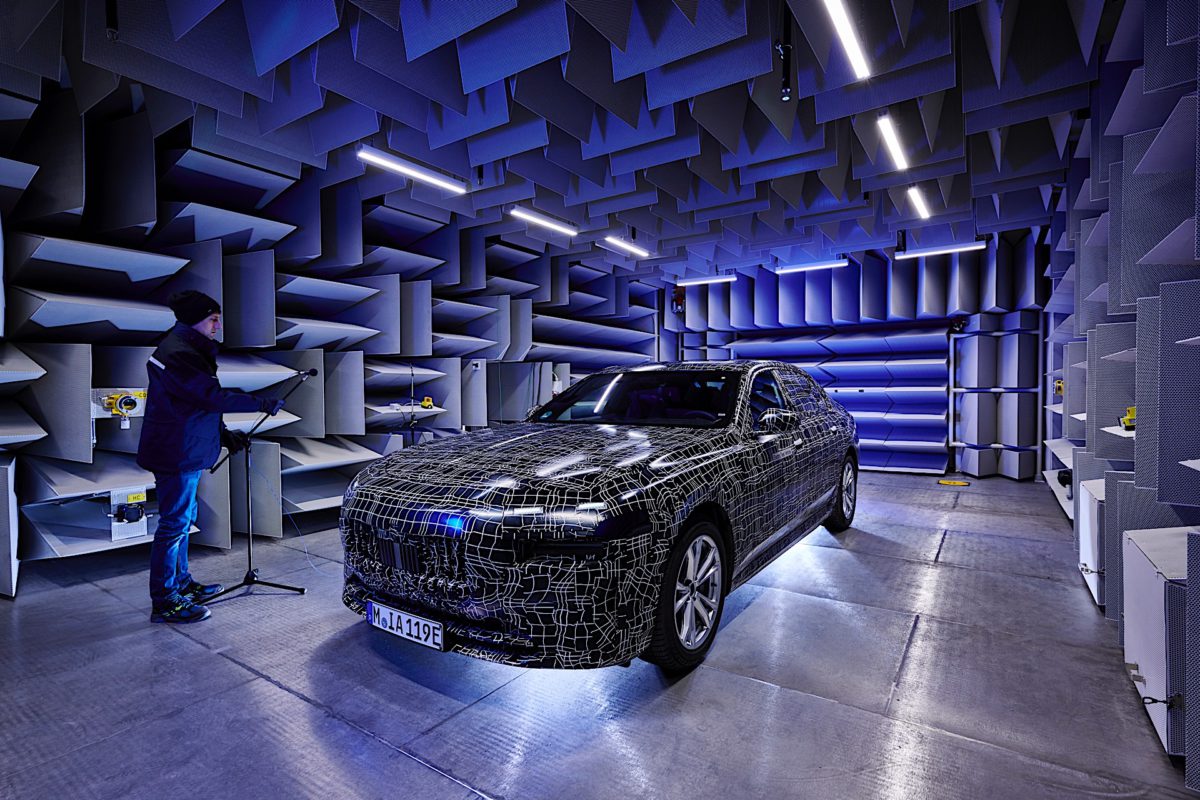The BMW i7 is inching closer to production and is now undergoing acoustics testing at the Research and Innovation Centre (FIZ) in Munich, Germany. BMW is aiming for a combination of driving pleasure and comfort that’s in a class of its own and keeping noise levels down is crucial to that. Near-production prototypes are being used evaluated by engineers to analyze the types of noise and vibrations emitted by the vehicle. This also includes precisely calibrating the pedestrian warning chimes and the electric motor’s sounds, the latter of which was a collaboration between BMW Group and Hollywood film music composer Hans Zimmer as part of the BMW IconicSounds Electric program,
At the new FIZ North branch, the BMW i7 will be put through acoustic benches designed especially for electrified vehicles. This allows for realistic simulations of all driving situations, allowing for the recreation of unwanted noises. The company uses roller dynamometers with unique quiescent levels and interchangeable surfaces to measure and validate drive acoustics and tire noise on various pavement types. One of the focuses during the i7’s development is to ensure that power delivery from the electric motor was completely silent. BMW added model-specific mounts and new noise-canceling covers specifically for the i7’s electric motors to ensure effective reduction of noise levels in all driving situations and maximize refinement.
BMW simulated conditions like day-to-day traffic and ambient noise. The FIZ North facility allows engineers to recreate all types of noise including the sounds of the climate control system, allowing them to calibrate it to the exact levels needed of the i7. To minimize wind noise, the car features flush door handles, clear-cut body surfaces, aerodynamically-optimized side mirrors, and an underbody that’s almost completely enclosed. In addition to lower air resistance, these also keep the cabin quiet. Loudspeakers from all directions are used to recreate construction noises and passing vehicles and test the effectiveness of the noise insulation. To keep mass down and maximize sound insulation, BMW is using new lightweight materials. These include sound absorbers integrated into the pillar trim, seats, headliner, rear shelf and comfort glazing on the window panes. Fleece elements are also used on the doors, sills, and wheel arches to reduce rolling noise.
At FIZ North’s electromagnetic compatibility (EMC) halls, i7 prototypes are exposed to powerful magnetic fields to see how susceptible the electrical systems are to interference and how they interact with their environment. Engineers can diagnose results from the vehicle in real-time via fiber optic cables. This allows for comprehensive protection of the vehicle and ensures every component from the suspension to the driver assistance features operate without interference from online, data, telephone, radio, and television signals.
Due later this year, the BMW i7 is the all-electric version of the next-generation 7 Series. Built on BMW’s CLAR platform, this flagship full-size luxury sedan will be the third battery-electric vehicle in the i sub brand following the iX and i4. The i7 will likely use the same dual-motor setup and 111.5-kWh lithium-ion battery as the iX xDrive50. That should give it a combined output of at least 516 hp and 564 lb-ft of torque, and a driving range of over 300 miles per charge. The i7 could also feature a higher peak DC charging rate of at least 200 kW just like the iX M60. Following the i7 will the i5, the all-electric counterpart to the next-generation 5 Series.
